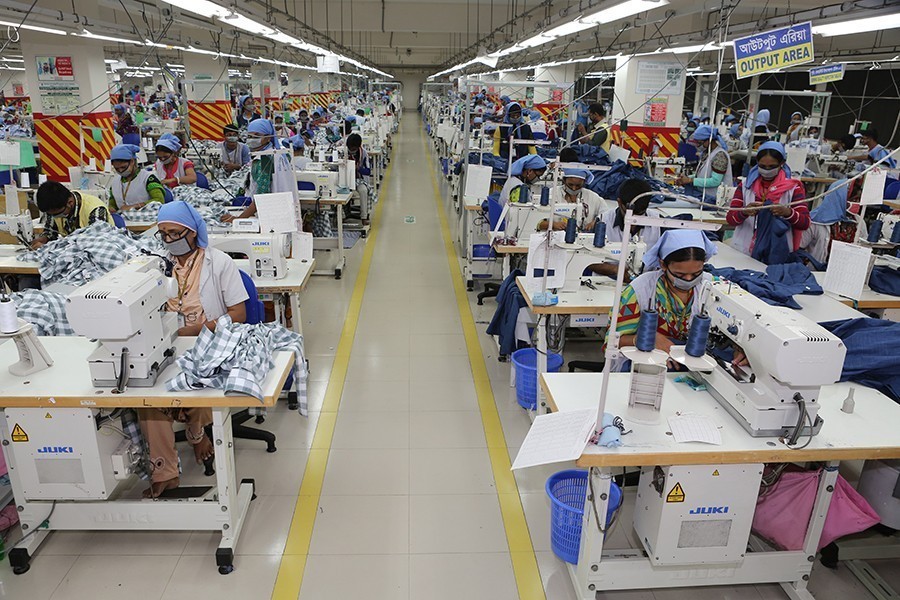Its robust comeback after the pandemic notwithstanding, the country's flagship export, the Readymade Garment (RMG), is learnt to be up against new challenges. Mostly affecting the woven garment, rather than the knitwear, the challenges, as reported, consist basically in the sharp rise in the prices of raw materials including cotton, fabrics, yarn, different kinds of fibres and accessories in the international market. As a result, despite the manifold increase in the volume of work orders for apparel products from foreign buyers in recent months, the value additions are remaining low. In fact, the high price of raw materials is eating into the net earnings from the export of RMG items. According to the Bangladesh Bank (BB) data, the value addition to the RMG exports in the fiscal year 2019-20 was only 56.49 per cent. As the BB data further show, this is much below the value additions ranging from 60 to 64 per cents during the pre-pandemic years between FY2012-13 and FY2018-19.What is concerning is that the downtrend in the RMG exports' value addition is persisting despite the rise in the volume of export.
As the price volatility of raw materials including that of energy in the international market could not be forecast beforehand, the local RMG exporters are put at a disadvantage when it comes to increasing the prices of their products. For the supply contracts with foreign buyers are reached before the market turned volatile. Also, there are other internal charges involved with exports which the buyers are not aware of. All these issues together militate against local woven garment manufacturers' ability to charge a better price for their products from foreign buyers.
Clearly, the RMG exporters are in a spot and need policy support from the government to keep their export at a reasonably profitable level. On this score, there should be efforts to reduce the RMG manufacturers' dependence on imported raw materials. At present, locally procured fabrics can meet only 35 to 40 per cent of woven garment's requirement. It is to be noted at this point that the apparel's knitwear sub sector has been able to make higher additions to its export. That is for the simple reason that 80 per cent of its raw materials are procured from the domestic market. Similar arrangements are also required to be made for the woven garment industries. The best way to help the woven garment is through developing the backward linkage industries including those of raw cotton, yarns and fabrics. That would, however, require necessary policy support from the government so that more entrepreneurs are willing to invest in the backward linkage sub sector. Side by side with these measures to improve the status of the cotton-based products and their export, it is also time the local entrepreneurs' attention is turned to the non-cotton, manmade fabrics. As the said products have the potential for greater value addition and their demand in the global market is also rising, the government has a big role to play in developing this sector, too. This would be crucial to the country's exports remaining competitive in the post-graduation phase of the economy.


